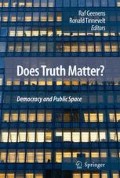Over the last few decades, media theory, philosophical anthropology and architectural theory have all called attention, with increasing emphasis, to what may be called ‘the crisis of place’.1 The importance of place, as an inte grative and stabilising force in human experience, is waning. Our experiences of time and space, work, communication and social relations are increasingly becoming mediated by a series of devices and systems that diminish the impact and meaning of place. Transport networks and, more recently in particular, communication and information networks, are radically redefining what it means to be ‘someplace’. At first, these devices and systems seem merely to lift old restrictions, without affecting the form of the experience itself. The elevator seems to be merely a way of getting up the stairs faster; flying another, quicker, mode of travel; the telephone merely a device for shouting over a very great distance; and the television screen a kind of enlarged town square. However, the realisation has gradually dawned that these things are not what they seem. A person who has flown someplace has not travelled, and talking to someone on the telephone is something completely different from a face-to-face encounter. Communication networks have effected the most dras tic change on experience, with unforeseeable consequences. They entail that the act of speaking is completely disconnected from a specific place: the place occupied by the speaker in reality (that is, where his or her body is) has no bearing on the speaking and listening, and does not determine the distance over which the voice carries. Virtual contact and virtual ubiquity result in the body being left behind on the edge of the network, as well as in new types of social relations, unconnected to bodily presence, substituting for place-bound relations. The speaker's ‘real’ place and his or her body are no more than residue.
Access this chapter
Tax calculation will be finalised at checkout
Purchases are for personal use only
Preview
Unable to display preview. Download preview PDF.
References
Augé, M. (1995). Non-places. London: Verso
Barney, D. (2004). The Network Society. Key Concepts. Cambridge, MA: Polity Press
Baudrillard, J. (1990). Fatal Strategies. Cambridge, MA: MIT Press
Baudrillard, J. (1999). The Consumer Society: Myths and Structures. London: Sage
Berlin, I. (2002). Two Concepts of Liberty. In H. Hardy (Ed.), Liberty: Incorporating Four Essays on Liberty(pp. 166–217). Oxford: Oxford University Press
Bidima, J. -G. (2000). Le corps, la cour et l'espace public. Politique africaine, 77, 90–106
Castells, M. (1996). The Rise of the Network Society. The Information Age: Economy, Society and Culture, Vol. I. Cambridge, MA and Oxford: Blackwell
Castells, M. (1997). The Power of Identity. The Information Age: Economy, Society and Culture, Vol. II. Cambridge, MA/Oxford: Blackwell
Castells, M. (1998). End of Millennium. The Information Age: Economy, Society and Culture, Vol. III. Cambridge, MA and Oxford: Blackwell
De Meyer, D., Versluys, K. et al. (Eds.) (1999). The Urban Condition: Space, Community and Self in the Contemporary Metropolis. Rotterdam: 010 Publishers
Dreyer, C. (2003). The Crisis of Representation in Contemporary Architecture. Semiotica, 143, 163–183
Ghent Urban Studies Team (GUST) (Ed.) (2002). Post Ex Sub Dis: Urban Fragmentations and Constructions. Rotterdam: 010 Publishers
Graham, S. (Ed.) (2004). The Cybercities Reader. London/New York: Routledge
Hofland, L. H. (1998). The Public Realm. Exploring the City's Quintessential Social Territory. New York: Aldine De Gruyter
Kahn, L. I. (1991). Architecture (The John William Lawrence Memorial Lectures, 1972). In A. Latour (Ed.), Louis I. Kahn Writings, Lectures, Interviews. New York: Rizzoli
Lefort, C. (1978). Les Formes de l'histoire. Essais d'anthropologie politique. Paris: Gallimard
Miles, M., Hall, T., and Borden, I. (Eds.) (2000). The City Cultures Reader. London/New York: Routledge
Mitchell, D. (2003). The Right to the City. Social Justice and the Fight for Public Space. New York: Guilford
Scanlon, T. (1975). Thomson on Privacy (Review of Judith Jarvis Thomson's The Right to Privacy). Philosophy and Public Affairs, 4(4), 315–322
Scruton, R. (2001). Architectural Principles in an Age of Nihilism. In A. Ballantyne (Ed.), What Is Architecture(pp. 53–62). London and New York: Routledge
Sennett, R. (1977). The Fall of Public Man. London/Boston, MA: Faber & Faber
Sheller, M. and Urry, J. (2003). Mobile Transformations of ‘Public’ and ‘Private’ Life. Theory, Culture and Society, 20(3), 107–125
Verschaffel, B. (1992). De Kring en het Netwerk. Over het statuut van de ‘publieke ruimte’. Archis, 2, 13–17
Verschaffel, B. (2003). The Survival Ethics of Rem Koolhaas: The First Houses by OMA. In V. Patteeuw (Ed.),What Is OMA. Considering Rem Koolhaas and the Office for Metropolitan Architecture(pp. 153–164). Rotterdam: NAI Publishers
Virilio, P. (1977). Speed and Politics: An Essay on Dromology. New York: Semiotext(e)
Virilio, P. (1991). The Aesthetics of Disappearance. New York: Semiotext(e)
Author information
Authors and Affiliations
Editor information
Editors and Affiliations
Rights and permissions
Copyright information
© 2009 Springer Science + Business Media B.V
About this chapter
Cite this chapter
Verschaffel, B. (2009). Semi-public Spaces: The Spatial Logic of Institutions. In: Geenens, R., Tinnevelt, R. (eds) Does Truth Matter?. Springer, Dordrecht. https://doi.org/10.1007/978-1-4020-8849-0_10
Download citation
DOI: https://doi.org/10.1007/978-1-4020-8849-0_10
Publisher Name: Springer, Dordrecht
Print ISBN: 978-1-4020-8848-3
Online ISBN: 978-1-4020-8849-0
eBook Packages: Humanities, Social Sciences and LawPhilosophy and Religion (R0)

